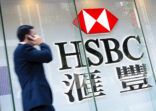“Hedge funds had a tough time over the last few years since the crisis, but this year onward there are some signs that Asian investors are warming up to them,” Cheo said in an FSA interview.
Globally, hedge funds saw outflows of around $110bn for the full year 2016, with both equity and fixed income hedge funds seeing the largest outflows during the year, according to data from Evestment.
Global fund flows
| 2016 inflows (outflows) | 2015 inflows (outflows) | Estimated AUM | |
| Equity |
($48.03) |
$16.46 |
$1,013.42 |
| Fixed income/credit |
($46.33) |
($20.16) |
$938.77 |
| Commodities |
$11.08 |
$0.01 |
$80.27 |
| Multi-asset |
($27.47) |
$51.08 |
$1,059.48 |
Source: Evestment, data in $bn
In the region, Asia-domiciled funds saw net outflows of $6.72bn in 2016, Evestment data shows.
New fund launches in Asia also decreased. According to Preqin data, 67 new hedge funds launched in 2016 and 139 in 2015. These numbers represent a continuous decline from an all-time high of 217 in 2014.
Changing perception?
The hedge fund industry may see a turnaround of sentiment, however, according to Bank of Singapore’s Cheo.
Investors are now in an environment where there is a lot of uncertainty and some stock markets are at an all-time high, Cheo said. In that sense, investors are now looking for exposure in equity market neutral and equity long short hedge fund strategies.
Cheo believes hedge funds in a client’s portfolio can reduce volatility or act as a portfolio diversifier. The products enable investors to take part in the markets that are now in an all-time high.
“So you don’t want to buy into a market that’s really expensive, but you want to be able to long and short at the same time”, which the traditional long-only equity and fixed income funds cannot do, he explained.
He added that Asian investors, if they invest in hedge funds, would prefer to take a diversified approach and have a portfolio of hedge fund managers across different asset classes.
However, hedge fund fees have been a huge issue.
A typical unconstrained hedge fund structure used to charge 2% of management fees and 20% of any profit, or “2 and 20”. But recent poor hedge fund performance caused investors to withdraw money and put pressure on fees. According to GSAM, the weighted average is now about 1.7 and 17.
In terms of fund flows, Asia-domiciled hedge funds are seeing an improvement of sentiment from investors, according to Evestment data. Although they saw net outflows of $6.72bn in 2016, they saw net inflows of $330m in the last three months.
Careful selection
Asian investors are still carefully selective and will focus on hedge fund performance, according to Cheo.
Cheo said that investors are looking at long-term hedge fund performance, which should be strong. Investors are also looking at how the managers performed during market crisis or during stress periods, such as the global financial crisis in 2008 or the European crisis in 2011-2012 and if they can produce the alpha that they usually promise.
Fees are also an important factor. But Cheo believes the long-term returns and lower volatility than other asset classes are most important.
The performance of the hedge, fixed income and equity fund sectors since the start of 2008. Hedge funds and fixed income products were less volatile than equity products, according to FE data. Although hedge and fixed income had declines right after the 2008 crisis, they were not as steep as equity products.
However, since 2008, the fixed income sector outperformed hedge funds. Investors could also get relatively the same amount of lower volatility in fixed income that hedge funds provide, but with lower fees.

















